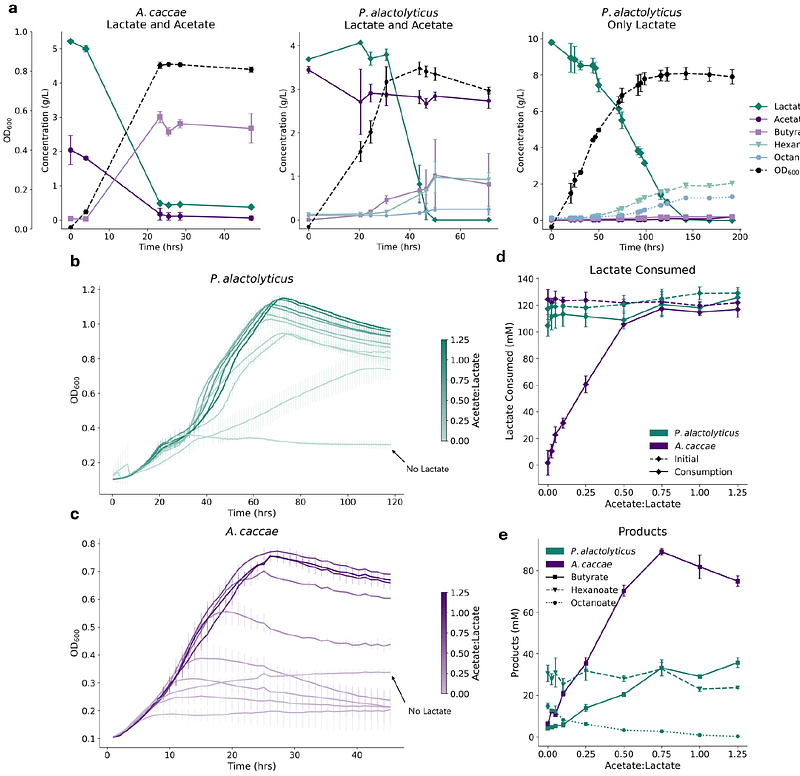Distinct Acetate Utilization Strategies Differentiate Butyrate and Octanoate Producing Chain-Elongating Bacteria

Distinct Acetate Utilization Strategies Differentiate Butyrate and Octanoate Producing Chain-Elongating Bacteria
Gois, I. M.; Bowers, C. M.; Kim, B.-C.; Flick, R.; Lawson, C. E.
AbstractChain elongating bacteria (CEB) are a unique guild of anaerobes that convert lactate, ethanol, and acetate derived from organic waste into valuable short- and medium-chain fatty acids (MCFAs). However, the metabolic rules that determine product chain length have remained elusive. Here, we combine 13C isotope tracing, proteomics, and metabolic modelling to show that distinct acetate utilization strategies underlie the divergence between butyrate- and MCFA-producing CEB. MCFA-producing strains sustain redox balance while recycling acetate to maximize lactate use under acetate limitation, but at the cost of slower growth due to increased protein burden. In contrast, butyrate-producing strains grow faster due to lower protein costs by favoring acetate assimilation, at the cost of restricted lactate utilization when acetate is scarce. These physiological trade-offs are encoded in the substrate specificity of coenzyme A transferase, the terminal enzyme in reverse {beta}-oxidation. Our findings uncover a fundamental constraint shaping chain-length selectivity in CEB and offer new strategies to optimize MCFA production from organic waste streams.